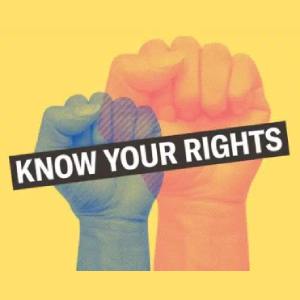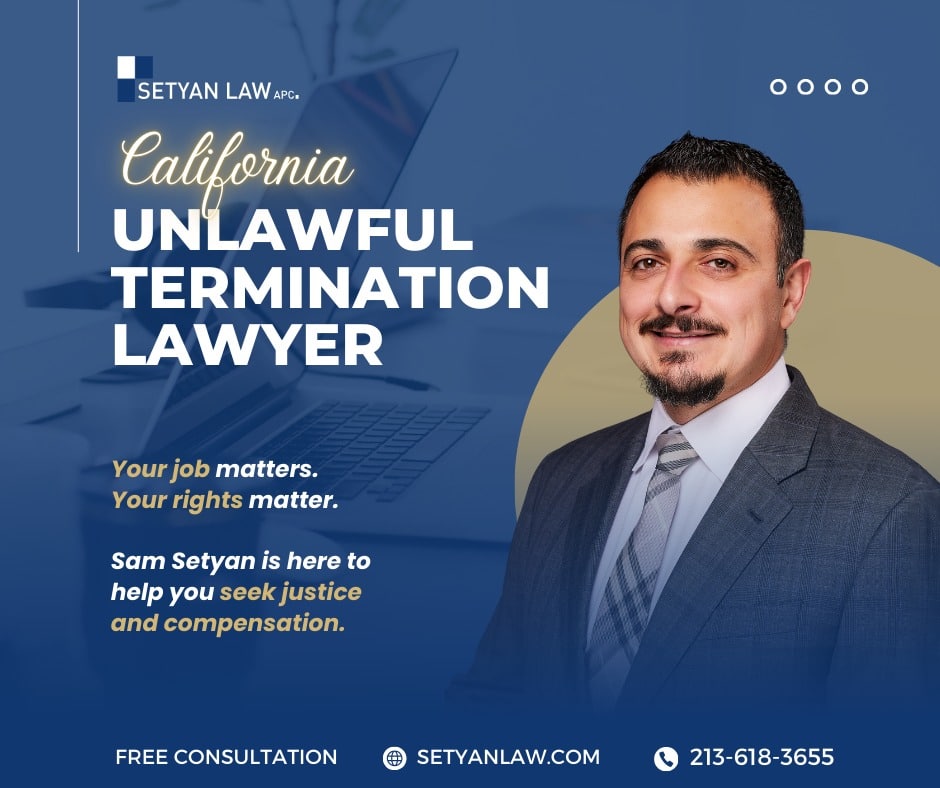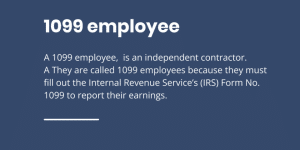Updated April 18, 2025
Understanding Wrongful Termination: Your Rights and Legal Recourse
In today’s dynamic job market, understanding your rights as an employee is crucial. One area that often causes confusion and distress is the concept of wrongful termination. Many workers find themselves in situations where they believe their dismissal was unjust, but determining whether it meets the legal criteria for wrongful termination can be challenging. This comprehensive guide aims to shed light on what constitutes wrongful termination, how it differs from legal dismissals, and what steps you can take if you believe you’ve been unfairly let go from your job.
The employment landscape is complex, with various laws and regulations governing the relationship between employers and employees. While companies generally have the right to manage their workforce, there are important limitations on how and why they can terminate an employee. Wrongful termination occurs when an employer fires a worker in violation of employment laws, contractual agreements, or public policy.
Understanding the nuances of wrongful termination is essential for both employees and employers. For workers, it provides a framework to recognize when their rights have been violated and empowers them to take appropriate action. For employers, it underscores the importance of fair and legal employment practices, helping them avoid costly litigation and maintain a positive workplace culture.
In this article, we’ll explore the various aspects of wrongful termination, from common examples to legal protections and steps for building a case. Whether you’re an employee concerned about your job security or an employer seeking to ensure compliance with labor laws, this guide will provide valuable insights into navigating the complex terrain of employment termination.
Defining Wrongful Termination
Wrongful termination is a legal concept that refers to the unlawful dismissal of an employee. It occurs when an employer fires a worker in a manner that violates employment laws, breaches contractual obligations, or goes against established public policy. While the specifics can vary depending on jurisdiction, wrongful termination generally encompasses situations where an employee is dismissed for reasons that are discriminatory, retaliatory, or in violation of an employment agreement.
It’s important to note that not all terminations, even if they feel unfair, meet the legal standard for wrongful dismissal. In many jurisdictions, employment is considered "at-will," meaning that either the employer or employee can end the working relationship at any time, for any reason, as long as it’s not illegal. However, there are significant exceptions to this rule, which form the basis for wrongful termination claims.
Understanding wrongful termination requires familiarity with various aspects of employment law, including anti-discrimination statutes, whistleblower protections, and contract law. It also involves recognizing the difference between lawful terminations based on legitimate business reasons and those that infringe upon an employee’s rights or violate legal protections.
Wrongful termination can take many forms, from overt discrimination based on protected characteristics to more subtle forms of retaliation against employees who exercise their legal rights. It can also include dismissals that violate the terms of an employment contract or go against company policies and procedures.
The consequences of wrongful termination can be severe for both employees and employers. For workers, it can result in lost wages, damage to professional reputation, and emotional distress. For employers, it can lead to costly lawsuits, negative publicity, and damage to employee morale and company culture.
By clearly defining wrongful termination and its various manifestations, both employees and employers can better navigate the complexities of the modern workplace, ensuring fair treatment and compliance with labor laws.
California Article XIV
Article 14 of the California Constitution is a powerful tool for protecting workers’ rights. It remains a cornerstone of California labor law. By empowering workers and regulating employer practices, it ensures:
- Equitable treatment in the workplace.
- Stronger recourse for employees facing unjust actions.
- A balance of power between employees and employers.
Legal Grounds for Wrongful Termination
Understanding the legal grounds for wrongful termination is crucial for both employees and employers. While the specific laws can vary by jurisdiction, there are several common bases upon which a wrongful termination claim can be built. These legal grounds serve as the foundation for protecting workers’ rights and ensuring fair employment practices.
1. Discrimination
One of the most prevalent grounds for wrongful termination claims is discrimination. Federal and state laws prohibit employers from firing employees based on certain protected characteristics. These typically include:
- Race or color
- National origin
- Gender or sex
- Age (for workers 40 and older)
- Religion
- Disability
- Pregnancy
Terminations based on any of these factors are illegal and can form the basis of a wrongful termination lawsuit. It’s important to note that discrimination doesn’t have to be the sole reason for termination; if it played a significant role in the decision, it could still be grounds for a claim.
2. Retaliation
Another common legal ground for wrongful termination is retaliation. This occurs when an employer fires an employee for engaging in legally protected activities. Examples of protected activities include:
- Filing a complaint about workplace discrimination or harassment
- Reporting illegal activities or safety violations (whistleblowing)
- Participating in an investigation into workplace misconduct
- Taking legally protected leave (e.g., under the Family and Medical Leave Act)
- Refusing to engage in illegal activities at the employer’s request
Retaliation claims often arise when an employee experiences negative consequences, including termination, after exercising their legal rights or reporting misconduct.
3. Breach of Contract
In cases where an employee has a written or implied employment contract, termination that violates the terms of that contract can be grounds for a wrongful termination claim. This can include:
- Violating specific termination procedures outlined in the contract
- Firing an employee for reasons not permitted by the contract
- Terminating employment before the end of a contracted term without proper cause
Even in the absence of a formal written contract, implied contracts based on employer promises or long-standing company policies can sometimes provide grounds for a wrongful termination claim.
4. Violation of Public Policy
Many jurisdictions recognize wrongful termination claims based on violations of public policy. This typically involves situations where an employee is fired for reasons that society deems unacceptable or contrary to the public good. Examples might include:
- Termination for refusing to commit an illegal act
- Firing an employee for exercising a legal right (e.g., voting, serving on a jury)
- Dismissal for reporting violations of law or public policy
These cases often involve balancing the employer’s interests against broader societal concerns and legal principles.
Understanding these legal grounds is essential for recognizing potential wrongful termination situations and taking appropriate action. For employees, it provides a framework for assessing whether their dismissal may have been unlawful. For employers, it underscores the importance of careful consideration and documentation when making termination decisions to avoid potential legal challenges.
Common Examples of Wrongful Termination
Wrongful termination can manifest in various ways, and understanding common examples can help both employees and employers recognize potential legal issues. While each case is unique, certain patterns and scenarios frequently arise in wrongful termination claims. Here are some typical examples:
1. Discriminatory Dismissals
One of the most prevalent forms of wrongful termination involves dismissals based on discriminatory factors. These can include:
- Firing an older employee to replace them with a younger worker
- Terminating a pregnant employee due to concerns about maternity leave
- Dismissing an employee after they disclose a disability or request accommodations
- Letting go of workers based on their race, religion, or national origin
In these cases, the termination decision is influenced by characteristics protected under anti-discrimination laws, making the dismissal illegal.
2. Retaliatory Firings
Retaliation against employees who engage in protected activities is another common form of wrongful termination. Examples include:
- Firing an employee who filed a sexual harassment complaint
- Dismissing a worker who reported safety violations to OSHA
- Terminating an employee for participating in a workplace investigation
- Letting go of a staff member who took legally protected family or medical leave
These terminations are often seen as attempts to punish employees for exercising their legal rights or reporting misconduct.
3. Contract Violations
For employees with employment contracts, terminations that breach the terms of these agreements can be wrongful. This might involve:
- Dismissing an employee before the end of a contracted term without proper cause
- Failing to follow disciplinary procedures outlined in the contract before termination
- Terminating employment for reasons not permitted by the contract’s terms
Even in cases of implied contracts, such as those based on employee handbooks or long-standing company policies, deviations from established procedures can sometimes form the basis for a wrongful termination claim.
4. Public Policy Violations
Terminations that go against public policy or societal norms can also be considered wrongful. Examples might include:
- Firing an employee for refusing to engage in illegal activities at work
- Dismissing a worker for serving on jury duty
- Terminating an employee for filing a workers’ compensation claim
- Letting go of a staff member for reporting environmental violations
These cases often involve situations where the employee’s actions serve a broader public interest, and termination is seen as contrary to societal values or legal principles.
5. Constructive Discharge
While not a direct termination, constructive discharge occurs when an employer makes working conditions so intolerable that an employee feels forced to resign. Examples might include:
- Subjecting an employee to severe harassment or bullying
- Dramatically reducing an employee’s hours or pay without justification
- Repeatedly denying necessary resources or support for job performance
In these cases, although the employee technically resigns, the law may treat it as a wrongful termination if the conditions leading to the resignation were sufficiently egregious.
Understanding these common examples of wrongful termination can help employees recognize when their rights may have been violated and assist employers in avoiding potentially illegal dismissals. It’s important to remember that the specific circumstances of each case can greatly influence its legal standing, and consulting with an employment law expert is often necessary to determine whether a particular termination meets the legal criteria for wrongful dismissal.
The Difference Between At-Will Employment and Wrongful Termination
Understanding the distinction between at-will employment and wrongful termination is crucial for both employees and employers. While these concepts may seem at odds, they coexist in the complex landscape of employment law, each playing a significant role in shaping the rights and responsibilities of both parties in the workplace.
At-Will Employment Explained
At-will employment is a legal doctrine that governs the majority of employment relationships in the United States. Under this principle:
- Employers can terminate employees for any reason or no reason at all, as long as the reason is not illegal.
- Employees have the right to leave their job at any time, for any reason, without facing legal consequences.
This arrangement provides flexibility for both parties, allowing businesses to adjust their workforce as needed and giving employees the freedom to pursue other opportunities without contractual constraints.
Key aspects of at-will employment include:
- No guarantee of job security or continued employment
- No requirement for employers to provide a reason for termination
- The ability for either party to end the employment relationship immediately
It’s important to note that while at-will employment is the default in most states, there are exceptions and limitations to this doctrine.
Employees are protected against discrimination by several federal and state laws. The most well known of those is the federal Title VII of the Civil Rights Act of 1964. This law prohibits workplace decisions on the basis of race, color, religion, national origin, or sex. Also, if an employee makes a claim about prejudice in the workplace, then an employer may not retaliate against them.
California expanded federal laws with the Fair Employment and Housing Act (FEHA). This law added protections for classes including ancestry, medical conditions, genetic information, marital status, gender identity, gender expression, sexual orientation, and military and veteran status.
Other laws that protect against discrimination in the workplace include:
- The Pregnancy Discrimination Act – This expands Title VII to include a prohibition of discrimination on the basis of pregnancy, childbirth, or medical conditions related to pregnancy and childbirth.
- The Equal Pay Act of 1963 (EPA) – This prohibits wage decisions amounting to gender bias between men and women who perform equal work in the same workplace.
- The Age Discrimination in Employment Act of 1967 (ADEA)
– This protects people who are 40 and older from discrimination in the workplace. - Title I of the Americans with Disabilities Act of 1990 (ADA)
– This makes it illegal for an employer to discriminate against a person with a disability.
Harassment is also prohibited in the workplace under state and federal laws. When harassment creates a hostile work environment, employers can be held accountable.
Wrongful Termination in the Context of At-Will Employment
Despite the broad discretion given to employers under at-will employment, wrongful termination can still occur. Wrongful termination refers to situations where an employee is fired for reasons that violate specific laws or public policies, even in an at-will employment context.
Common exceptions to at-will employment that can lead to wrongful termination claims include:
- Discrimination: Firing based on protected characteristics such as race, gender, age, or disability.
- Retaliation: Terminating an employee for engaging in legally protected activities.
- Breach of contract: Violating the terms of an employment contract or implied agreement.
- Public policy violations: Dismissing an employee for reasons that go against established public policy.
These exceptions create a framework where employees have protections against unfair dismissal, even within an at-will employment system.
Navigating the Intersection of At-Will and Wrongful Termination
For employers, understanding this intersection is crucial for making legally sound termination decisions. While at-will employment provides significant latitude, it’s essential to:
- Document reasons for termination, even if not legally required
- Ensure consistency in applying employment policies
- Be aware of and comply with all relevant employment laws and regulations
For employees, recognizing the limits of at-will employment can help in identifying potential wrongful termination situations. It’s important to:
- Understand your rights under both federal and state employment laws
- Be aware of any contractual agreements or company policies that may modify the at-will relationship
- Keep records of performance reviews, communications, and any incidents that might be relevant in case of a dispute
By understanding the nuances of at-will employment and the circumstances that can lead to wrongful termination, both employers and employees can better navigate the complexities of the modern workplace, ensuring fair treatment and compliance with labor laws.
Legal Protections Against Wrongful Termination
Various legal protections exist to safeguard employees from wrongful termination. These protections are enshrined in federal and state laws, as well as in common law principles. Understanding these legal safeguards is crucial for both employees seeking to protect their rights and employers aiming to maintain fair and lawful employment practices.
Federal Laws
Several federal statutes provide significant protections against wrongful termination:
Title VII of the Civil Rights Act of 1964: Prohibits discrimination based on race, color, religion, sex, or national origin.
Age Discrimination in Employment Act (ADEA): Protects workers 40 years and older from age-based discrimination.
Americans with Disabilities Act (ADA): Prevents discrimination against qualified individuals with disabilities and requires reasonable accommodations.
Pregnancy Discrimination Act: Forbids discrimination based on pregnancy, childbirth, or related medical conditions.
Family and Medical Leave Act (FMLA): Provides job protection for eligible employees who take leave for specified family and medical reasons.
National Labor Relations Act (NLRA): Protects employees’ rights to engage in collective bargaining and concerted activities.
Whistleblower Protection Act: Safeguards federal employees who disclose government wrongdoing.
These laws not only prohibit discriminatory terminations but also protect employees from retaliation for asserting their rights under these statutes.
State Laws
Many states have enacted their own laws that provide additional protections against wrongful termination. These may include:
- Expanded anti-discrimination protections covering additional characteristics (e.g., sexual orientation, gender identity)
- Stronger whistleblower protections
- Specific protections for certain types of leave (e.g., voting, jury duty)
- Laws addressing constructive discharge
State laws can often provide more comprehensive protections than federal statutes, making it important for both employees and employers to be aware of local regulations.
Common Law Protections
In addition to statutory protections, common law principles developed through court decisions also provide safeguards against wrongful termination:
Public Policy Exception: Prevents terminations that violate established public policy (e.g., firing an employee for refusing to commit an illegal act).
Implied Contract Exception: Recognizes that employer promises or long-standing practices can create an implied contract, limiting at-will termination rights.
Covenant of Good Faith and Fair Dealing: In some jurisdictions, this principle requires employers to act in good faith when making termination decisions.
These common law protections can provide recourse in situations where statutory protections might not apply.
Contractual Protections
Employment contracts, collective bargaining agreements, and even employee handbooks can provide additional protections against wrongful termination:
- Specific procedures for termination
- Grounds for termination
- Notice periods
- Severance provisions
These contractual elements can modify the at-will employment relationship, providing employees with greater job security and clearer expectations regarding termination.
Enforcement Mechanisms
Various agencies and legal processes exist to enforce these protections:
- Equal Employment Opportunity Commission (EEOC): Investigates and enforces federal anti-discrimination laws.
- State Fair Employment Practices Agencies: Handle state-level discrimination complaints.
- Department of Labor: Enforces various federal labor laws, including the FMLA.
- National Labor Relations Board: Addresses violations of the NLRA.
- Civil Courts: Provide a forum for wrongful termination lawsuits.
Understanding these enforcement mechanisms is crucial for employees seeking to assert their rights and for employers aiming to comply with legal requirements.
By familiarizing themselves with these legal protections, employees can better recognize when their rights may have been violated, and employers can implement practices that minimize the risk of wrongful termination claims. This knowledge forms the foundation for fair employment practices and helps ensure a just and equitable workplace for all.
Signs You May Be a Victim of Wrongful Termination
Recognizing the signs of wrongful termination is crucial for employees who believe they may have been unfairly dismissed. While not all unexpected or seemingly unfair terminations are illegal, certain indicators can suggest that a dismissal may have crossed legal boundaries. Here are key signs that might indicate you’ve been a victim of wrongful termination:
Sudden Change in Treatment
If you notice a dramatic shift in how you’re treated at work, especially following a specific event, it could be a red flag. This might include:
- Unexplained exclusion from meetings or projects
- Sudden negative performance reviews after a history of positive feedback
- Increased scrutiny or micromanagement of your work
These changes, particularly if they occur after you’ve engaged in protected activities (like filing a complaint or requesting accommodations), could be signs of retaliation leading to wrongful termination.
Violation of Company Policies or Procedures
Most companies have established procedures for addressing performance issues or conducting terminations. If your dismissal doesn’t follow these protocols, it might indicate wrongful termination. Look for:
- Lack of documented warnings or performance improvement plans
- Failure to follow progressive discipline policies
- Termination without the involvement of HR or proper management channels
Deviations from standard procedures can suggest that the termination was not based on legitimate business reasons.
Discriminatory Comments or Behavior
Any comments or actions that suggest your termination was based on protected characteristics could be evidence of wrongful dismissal. This might include:
- Remarks about your age, race, gender, or other protected attributes
- Questions about retirement plans (for older workers)
- Comments about your ability to perform job duties due to pregnancy or disability
Even subtle or indirect comments related to protected characteristics can be indicative of discriminatory intent.
Timing Coincides with Protected Activities
If your termination occurs shortly after you’ve engaged in legally protected activities, it could be a sign of retaliatory dismissal. Watch for terminations that follow:
- Filing a complaint about harassment or discrimination
- Reporting safety violations or other illegal activities
- Taking FMLA leave or requesting accommodations for a disability
- Participating in union activities or discussions about working conditions
The proximity of these events to your termination can be crucial in establishing a case for wrongful dismissal.
Inconsistent or Changing Reasons for Termination
If the reasons given for your termination are vague, inconsistent, or change over time, it might indicate that the stated reason is a pretext for an unlawful motive. Pay attention to:
- Different explanations given to you versus what’s documented
- Reasons that don’t align with your performance history or recent feedback
- Vague explanations like "not a good fit" without specific examples
Inconsistencies in the rationale for termination can suggest that the employer is trying to conceal the real, potentially unlawful, reason for the dismissal.
Termination Based on False or Unfair Accusations
If you’re terminated based on allegations that you know to be false or grossly exaggerated, and your employer fails to properly investigate these claims, it could be a sign of wrongful termination. This is especially true if:
- You’re not given an opportunity to respond to accusations
- The employer ignores evidence that contradicts the allegations
- The accusations seem designed to create a pretext for termination
False accusations used as grounds for termination can sometimes mask discriminatory or retaliatory motives.
Pressure to Resign
If you’re pressured to resign rather than being formally terminated, it could be an attempt to avoid a wrongful termination claim. Be wary of:
- Suggestions that resigning would be "better for your career"
- Threats of negative consequences if you don’t resign
- Offers of severance packages contingent on voluntary resignation
These tactics might be used to create a "voluntary" separation when the underlying reasons for termination are potentially unlawful.
Hostile Work Environment Leading to Resignation
Sometimes, wrongful termination takes the form of constructive discharge, where working conditions become so intolerable that you feel forced to resign. Signs might include:
- Persistent harassment or bullying
- Drastic changes in job duties or working conditions
- Unreasonable performance expectations or impossible targets
If these conditions are severe enough to compel a reasonable person to resign, it might be considered constructive discharge, a form of wrongful termination.
Recognizing these signs is the first step in determining whether you may have a case for wrongful termination. If you observe one or more of these indicators, it’s advisable to document your experiences thoroughly and consider consulting with an employment law attorney to evaluate your situation and understand your options for legal recourse.
Steps to Take If You Suspect Wrongful Termination
If you believe you’ve been wrongfully terminated, taking prompt and strategic action is crucial to protect your rights and build a potential case. Here are essential steps to consider:
Document Everything
Start by meticulously documenting all aspects of your termination and the events leading up to it:
- Write down a detailed account of the termination meeting, including who was present and what was said.
- Gather all relevant emails, memos, and performance reviews.
- Note any witnesses to key events or conversations.
- Keep a record of any discriminatory comments or actions you’ve experienced.
This documentation can serve as crucial evidence if you decide to pursue legal action.
Review Your Employment Contract and Company Policies
Carefully examine your employment contract, employee handbook, and any other relevant company policies:
- Look for specific procedures related to termination and disciplinary actions.
- Check if there are any clauses about dispute resolution or arbitration.
- Identify any promises or guarantees made regarding job security or termination processes.
Understanding these documents can help you determine if your employer violated any contractual obligations or company policies.
Request a Written Explanation for Your Termination
If you haven’t already received one, ask your employer for a written explanation of the reasons for your termination:
- Make this request in writing, preferably via email for documentation purposes.
- Be professional and courteous in your request.
- If possible, ask for a copy of your personnel file.
Having an official statement of the reasons for your termination can be valuable if the employer’s explanation changes later.
Consult with an Employment Law Attorney
Seeking legal advice early in the process can be invaluable:
- Look for an attorney specializing in employment law or wrongful termination cases.
- Many offer free initial consultations to evaluate your case.
- Be prepared to provide a detailed account of your situation and any evidence you’ve gathered.
An experienced attorney can help you understand your rights, assess the strength of your case, and advise on the best course of action.
File a Complaint with Relevant Government Agencies
Depending on the nature of your case, you may need to file a complaint with appropriate government agencies:
- For discrimination cases, file with the Equal Employment Opportunity Commission (EEOC) or your state’s fair employment practices agency.
- For wage disputes, contact the Department of Labor’s Wage and Hour Division.
- For safety violations, report to the Occupational Safety and Health Administration (OSHA).
Filing these complaints is often a necessary step before pursuing a lawsuit and can sometimes lead to resolution without court intervention.
Preserve Your Professional Reputation
While addressing your wrongful termination, it’s important to maintain your professional standing:
- Refrain from speaking negatively about your former employer, especially on social media.
- Continue networking and seeking new employment opportunities.
- Be prepared to explain your departure professionally in future job interviews.
Maintaining a positive and professional demeanor can help protect your career prospects and credibility.
Consider Negotiating a Severance Agreement
If your employer offers a severance package, carefully review it before signing:
- Understand what rights you may be waiving by accepting the agreement.
- Consider negotiating for better terms, especially if you have a strong case for wrongful termination.
- Consult with your attorney before signing any agreements.
A well-negotiated severance agreement can sometimes provide a satisfactory resolution without the need for legal action.
Prepare for Potential Legal Action
If other avenues don’t lead to a satisfactory resolution, prepare for the possibility of legal action:
- Discuss the potential timeline, costs, and outcomes with your attorney.
- Be prepared for a potentially lengthy process.
- Consider the emotional and financial impacts of pursuing a lawsuit.
Legal action should typically be a last resort, but in cases of clear wrongful termination, it may be necessary to protect your rights and seek justice.
Take Care of Your Mental Health
Dealing with wrongful termination can be emotionally taxing:
- Seek support from friends, family, or professional counselors.
- Consider joining support groups for individuals facing similar situations.
- Focus on self-care and maintaining a positive outlook.
Taking care of your mental health is crucial as you navigate the challenges of addressing wrongful termination.
By following these steps, you can protect your rights, build a strong case if necessary, and navigate the complex process of addressing a suspected wrongful termination. Remember, each situation is unique, and it’s important to tailor your approach based on the specific circumstances of your case and the advice of legal professionals.
Building a Case for Wrongful Termination
If you believe you’ve been wrongfully terminated and decide to pursue legal action, building a strong case is crucial. This process involves gathering evidence, understanding the legal standards, and presenting your case effectively. Here’s a comprehensive guide to building a case for wrongful termination:
Gather and Organize Evidence
The foundation of any wrongful termination case is solid evidence. Start by collecting:
Employment documents:
- Offer letter and employment contract
- Employee handbook and company policies
- Performance reviews and evaluations
- Emails, memos, and other communications related to your work
Termination-related documents:
- Written notice of termination
- Any explanations provided for your dismissal
- Severance agreement (if offered)
Personal records:
- Detailed timeline of events leading to termination
- Notes from meetings or conversations related to your dismissal
- Records of any discriminatory or retaliatory actions
Witness information:
- Names and contact details of colleagues who may have witnessed relevant events
- Any statements or testimonials from coworkers supporting your case
Organize these materials chronologically and create a clear narrative of events.
Identify the Legal Basis for Your Claim
Determine which legal grounds best support your wrongful termination claim:
- Discrimination: If your termination was based on a protected characteristic (e.g., race, gender, age, disability)
- Retaliation: If you were fired for engaging in legally protected activities
- Breach of contract: If your dismissal violated the terms of an employment agreement
- Violation of public policy: If you were terminated for refusing to engage in illegal activities or exercising a legal right
Understanding the specific legal basis for your claim will help focus your case and determine the evidence you need to emphasize.
Establish a Clear Timeline
Create a detailed chronology of events related to your termination:
- Include dates of significant incidents, conversations, and actions
- Note any changes in your job duties, treatment, or performance evaluations
- Highlight events that directly preceded your termination
This timeline can help demonstrate patterns of behavior or sudden changes that support your claim of wrongful termination.
Document the Impact of Termination
Outline the consequences of your wrongful termination:
- Lost wages and benefits
- Emotional distress and impact on mental health
- Damage to professional reputation
- Difficulties in finding new employment
Quantifying these impacts can be important for determining potential damages in your case.
Research Similar Cases
Look into precedents and similar wrongful termination cases:
- Research cases in your jurisdiction with similar circumstances
- Understand how courts have ruled in comparable situations
- Identify key factors that influenced outcomes in these cases
This research can provide insights into how to structure your case and what evidence may be most persuasive.
Consult with Expert Witnesses
Consider enlisting expert witnesses to strengthen your case:
- Employment law experts to testify about industry standards and practices
- Mental health professionals to address emotional impacts
- Financial experts to calculate economic damages
Expert testimony can lend credibility to your claims and help quantify damages.
Prepare for Potential Defenses
Anticipate and prepare for possible defenses your former employer might use:
- Performance issues or policy violations
- Business necessity for termination
- Lack of knowledge about protected activities or characteristics
Being prepared for these arguments can help you build a more robust case.
Develop a Compelling Narrative
Craft a clear and persuasive story that ties together all elements of your case:
- Start with your hiring and positive contributions to the company
- Describe the events leading to your termination
- Explain how the termination violates specific laws or contracts
- Highlight the impact of the wrongful termination on your life and career
A well-constructed narrative can make your case more compelling to judges, juries, or mediators.
Consider Alternative Dispute Resolution
Explore options for resolving your case outside of court:
- Mediation: A neutral third party helps facilitate a resolution
- Arbitration: A private process where an arbitrator makes a binding decision
These methods can often lead to faster resolutions and may be less costly than a full trial.
Prepare for Litigation
If your case goes to court, be prepared for the litigation process:
- Work closely with your attorney to develop legal strategies
- Participate in the discovery process, providing requested information
- Prepare for depositions and potential court appearances
- Be ready for a potentially lengthy and emotionally challenging process
Understanding and preparing for each stage of litigation can help you navigate the process more effectively.
Stay Professional and Ethical
Throughout the process of building your case:
- Maintain a professional demeanor in all communications
- Avoid discussing the case on social media or with unauthorized parties
- Be honest and accurate in all your statements and documentation
- Follow your attorney’s advice regarding interactions with your former employer
Maintaining professionalism and integrity can strengthen your credibility and position in the case.
Building a strong case for wrongful termination requires careful preparation, thorough documentation, and a clear understanding of the legal principles involved. By following these steps and working closely with experienced legal counsel, you can increase your chances of successfully proving wrongful termination and securing appropriate remedies for the injustice you’ve experienced.
Legal Remedies and Compensation for Wrongful Termination
When a case of wrongful termination is successfully proven, various legal remedies and forms of compensation may be available to the affected employee. The specific remedies and amount of compensation can vary depending on the circumstances of the case, the applicable laws, and the jurisdiction. Understanding these potential outcomes is crucial for both employees seeking justice and employers assessing their potential liabilities. Here’s an overview of the common legal remedies and types of compensation in wrongful termination cases:
Reinstatement
One potential remedy in wrongful termination cases is reinstatement to the former position:
- The employee is returned to their original job or a comparable position.
- This remedy is more common in cases involving union contracts or public sector employment.
- Reinstatement may include back pay and restoration of benefits.
However, reinstatement is not always practical or desirable, especially if the relationship between the employee and employer has significantly deteriorated.
Back Pay
Back pay is a common form of compensation in wrongful termination cases:
- It covers the wages and benefits the employee would have earned from the date of termination to the date of judgment or settlement.
- Back pay may include salary increases, bonuses, and other forms of compensation the employee would have received if not for the wrongful termination.
- Interest on back pay may also be awarded in some cases.
The calculation of back pay typically takes into account any earnings the employee had from other employment during the period in question.
Front Pay
In cases where reinstatement is not feasible, front pay may be awarded:
- Front pay compensates the employee for future lost earnings.
- It’s typically awarded for a specific period, based on factors such as the employee’s age, career stage, and job market conditions.
- The amount is often calculated based on the difference between the employee’s previous salary and their current or potential future earnings.
Front pay aims to put the employee in the financial position they would have been in had the wrongful termination not occurred.
Compensatory Damages
Compensatory damages are designed to compensate the employee for other losses resulting from the wrongful termination:
- Emotional distress or mental anguish
- Damage to professional reputation
- Job search expenses
- Medical expenses related to the stress of termination
These damages are intended to make the employee "whole" by addressing non-economic losses associated with the wrongful termination.
Punitive Damages
In cases of particularly egregious conduct by the employer, punitive damages may be awarded:
- These damages are intended to punish the employer and deter similar behavior in the future.
- Punitive damages are typically only available in cases involving intentional discrimination or extreme misconduct.
- The availability and amount of punitive damages can vary significantly by jurisdiction and are often subject to statutory caps.
Attorney’s Fees and Costs
In many wrongful termination cases, successful plaintiffs may be awarded attorney’s fees and legal costs:
- This can include fees for legal representation, court costs, and expenses related to the litigation.
- The award of attorney’s fees is often crucial in making it financially feasible for employees to pursue wrongful termination claims.
Injunctive Relief
In some cases, the court may order injunctive relief:
- This could include requiring the employer to change certain policies or practices.
- It might involve mandating anti-discrimination training or revising termination procedures.
- Injunctive relief aims to prevent similar violations from occurring in the future.
Negotiated Settlements
Many wrongful termination cases are resolved through negotiated settlements:
- Settlements may include a combination of the above remedies.
- They often involve a lump sum payment to the employee.
- Settlements typically include confidentiality agreements and releases of further claims against the employer.
Tax Considerations
It’s important to note that different types of compensation may have different tax implications:
- Back pay and front pay are typically treated as taxable income.
- Compensatory damages for physical injuries or sickness are generally not taxable.
- The tax treatment of emotional distress damages can be complex and may depend on the specific circumstances.
Mitigation of Damages
In most wrongful termination cases, the employee has a duty to mitigate damages:
- This means making reasonable efforts to find new employment.
- Compensation may be reduced if the court finds that the employee failed to make adequate efforts to mitigate their losses.
Statutory Limits
Some jurisdictions and federal laws place caps on certain types of damages.
Need an Employment Lawyer?
Discuss the possibility of filing a wrongful termination case with an expert wrongful discharge attorney. No fee until you win.








